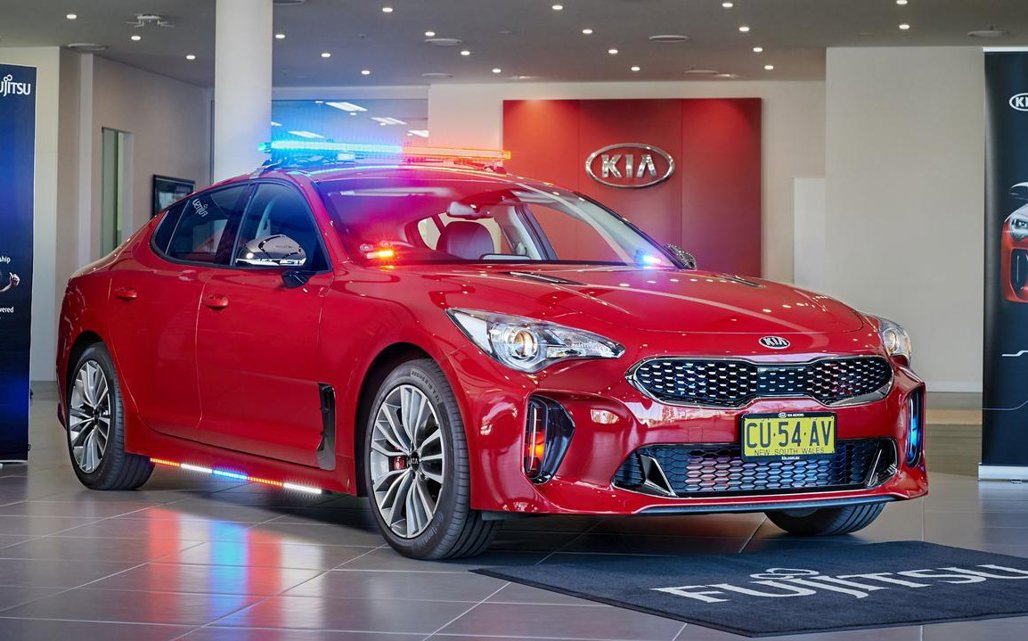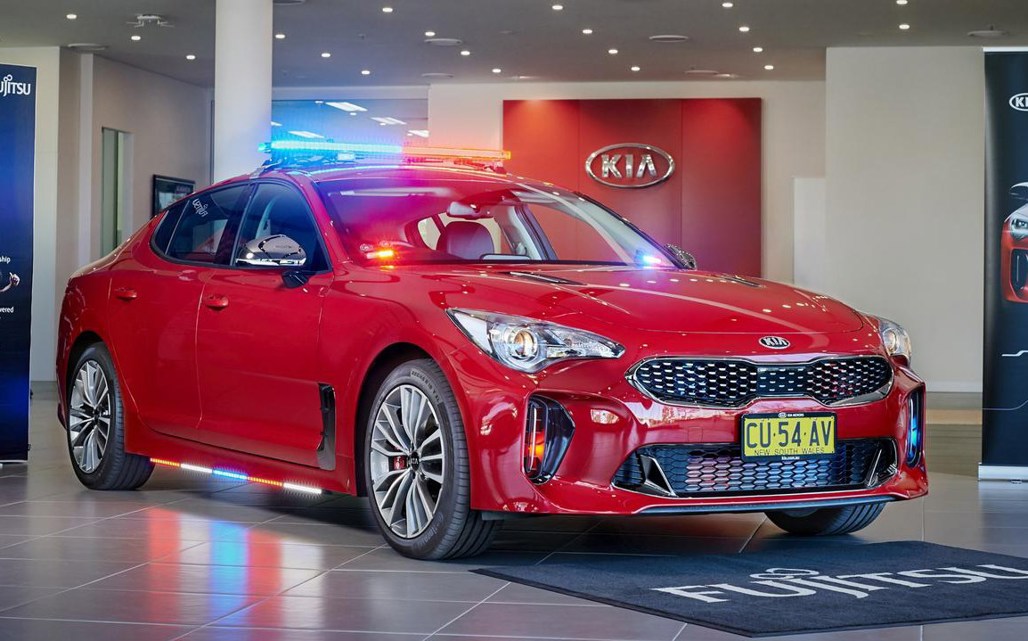Groundbreaking new tech is set to make Aussie police a much more formidable force. Fujitsu’s IT specialists have teamed up with Kia to produce an advanced prototype of the police car of the future, dubbed Project Koshin.
The promise of the technology in the Australian developed prototype is to make our police cars more user friendly, efficient, safe, cheaper and smarter than any in the world.
For the first time a car maker has allowed the integration of police tech directly into its vehicle. This means that instead of adding masses of third party equipment to the vehicle, all necessary functions can be executed via the touchscreen.
Fujitsu NSW’s Ian Hamer says that the disjointed nature of police vehicle hardware makes it harder for frontline cops to do their job as efficiently as possible.
He says none of the current police tech “talks” to any other database or piece of equipment in the vehicle. For example, number plate recognition fitted in any police car doesn’t communicate with the criminal search database.
Further, there are separate controls for all applications used by police, such as radar speed detection, licence plate scanning and sirens.
But in the vision of Fujitsu and Kia, this will no longer be the case. Soon police could control high-definition video or sirens via the touchscreen and read speeding information from the car’s head-up display.
Read more: Police deploy twin-turbo Kia Stinger in Australia
There would be more information at patrolling officers’ fingertips. They now must search a database to find why a licence plate has been identified — once this is integrated with the criminal database, that detail becomes instantly available.
High-definition cameras in the cars can be used for facial recognition, meaning every vehicle becomes a moving security camera.
Eliminating the need to log in to each computer manually when a vehicle is started, individual officers can get access to their profiles via a biometric fingerprint scanner.
Hamer regards all these steps as fairly logical but they have not been introduced, he explains, because suppliers of police vehicles have locked third party providers out. Kia has opened up its platforms to allow integration into existing software and hardware.
Beyond connectivity and increased capabilities, Hamer says, there is also vastly improved safety for officers.
“There is a big problem with officer safety. Everything they put in the vehicle is an Australian Design Rules compliance issue. It interrupts airbag deployment zones (and affects) crash protection.
“All the computers and all the stuff they bolt into the vehicle block the aircon control and vents, which means in the middle of summer in 40 degree heat, there is no aircon,” says Hamer.
There is also a huge cost. Multiple mobile computers, routers, radar and installation of various power sources and other hardware can add $60,000 to $80,000 per vehicle.
Read more: Culture shock — is the new Kia Stinger a world-beater?
It also can take up to six weeks to get a Highway Patrol car up to operational capacity — Fujitsu is aiming for two weeks.
Fujitsu won’t divulge the cost per vehicle for its technology but says it will be cheaper than the current set-up, especially when applied to the life of the vehicle.
What you'll find in a current Australian Highway Patrol car. Photo / News Corp Australia
State police forces are keen and the tech is getting close to readiness to test. When we will see it in the Kia Stinger and Sorento police vehicles you see in your rear view mirror is a matter for each police department.
Hamer says the set-up for general duties vehicles could be ready to go in a few months. For the Highway Patrol, given the increased requirements of those vehicles, it could take 12 months.
For now the technology will only be available in Kia police vehicles, operating in some states. Fujitsu hasn’t ruled out working eventually with other brands globally. Among other agencies, the partners have been in talks with the US Department of Homeland Security.
- news.com.au




